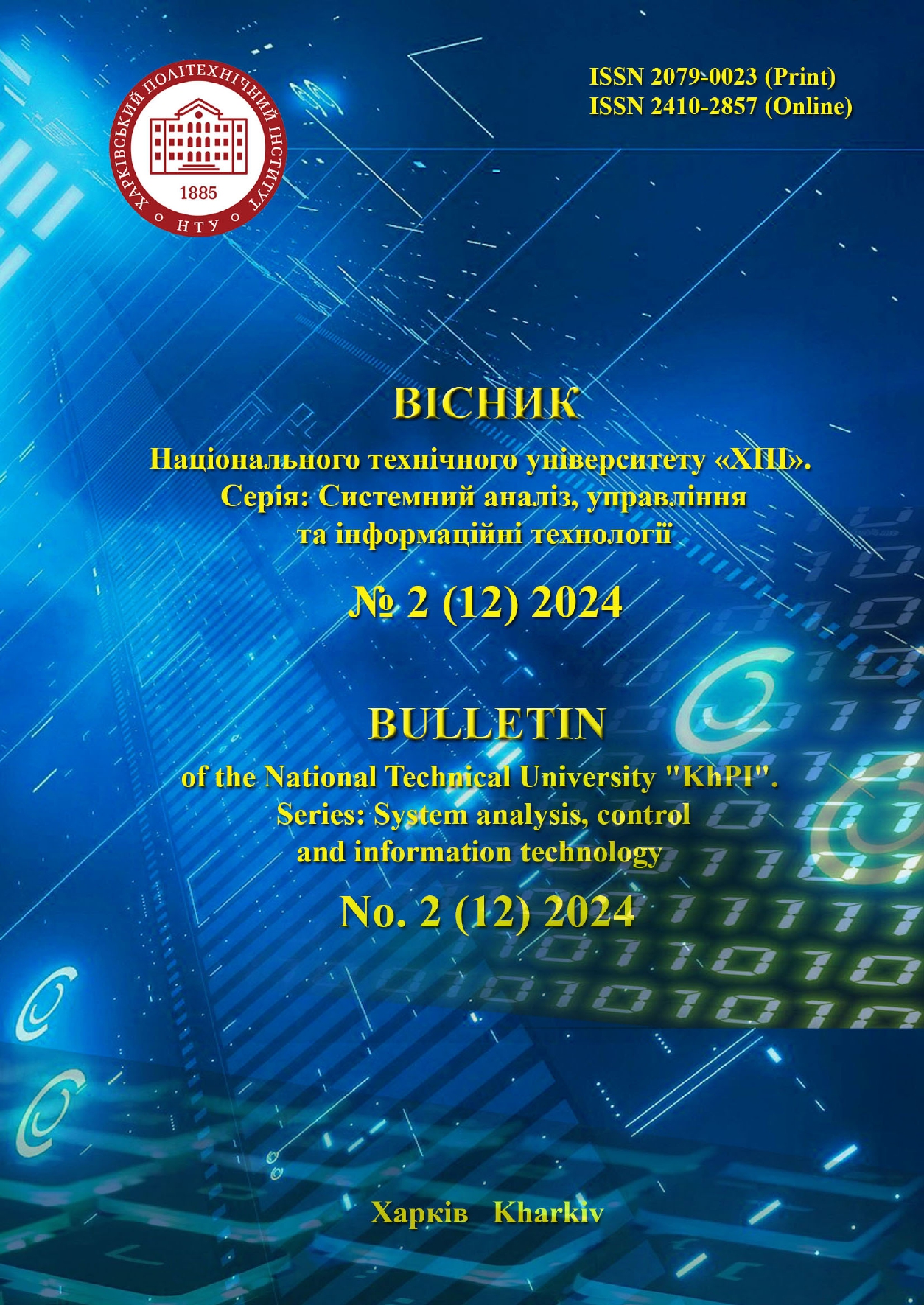STUDY OF COMPATIBILITY OF METHODS AND TECHNOLOGIES OF HIGH-LEVEL PROTOCOLS AND ERROR-CORRECTING CODES
DOI:
https://doi.org/10.20998/2079-0023.2024.02.14Keywords:
VPN, FEC, ECC, CIA triad, common security model, cascade codes, data transmission channelAbstract
Since the year 2000, the fields of error-correction codes and Virtual Private Networks (VPNs) have undergone significant advancements driven by technological demands for higher reliability and security in communication systems. In error-correction codes, the development of turbo codes and Low-Density Parity-Check (LDPC) codes reached new heights, with LDPC codes being adopted in standards like 5G and Wi-Fi 6 for their near-Shannon-limit performance. This period saw groundbreaking contributions from researchers like David MacKay and Radford Neal, who refined LDPC algorithms, and Erdal Arıkan, who introduced polar codes in 2008. Polar codes have since been integrated into 5G systems due to their efficiency and low complexity, marking a milestone in modern coding theory. Advances in decoding methods, such as belief propagation and successive cancellation, further enhanced the utility of these codes in practical applications. Parallel to these developments, VPN technology evolved in response to the growing need for secure and private communication in an increasingly interconnected world. Enhanced encryption protocols such as IPsec and OpenVPN became widespread, supported by innovations in cryptography. Researchers like Hugo Krawczyk contributed to robust authentication mechanisms, such as the HMAC and IKEv2 protocols, ensuring the integrity and confidentiality of VPN tunnels. Meanwhile, the development of WireGuard in the mid-2010s, spearheaded by Jason A. Donenfeld, introduced a lightweight and highly secure VPN protocol, revolutionizing the way modern VPNs operate. These advancements addressed the escalating cyber threats and facilitated the secure exchange of data across global networks. The importance of studying error-correction codes and VPNs in the modern era cannot be overstated. Error-correction codes are integral to overcoming the challenges of high-noise environments, enabling reliable communication in technologies ranging from space exploration to massive IoT networks. Simultaneously, VPNs remain critical for preserving user privacy, securing corporate networks, and protecting sensitive data in the face of sophisticated cyberattacks. Emerging technologies like quantum computing and artificial intelligence introduce both opportunities and threats, necessitating continuous innovation in these fields. Exploring quantum error-correction codes and post-quantum cryptographic protocols represents a vital area for future research. By addressing these challenges, scientists and engineers can ensure the resilience and security of communication systems in an increasingly digital and interconnected world.
References
Stallings W. Data and Computer Communications. 10th ed. Pearson, 2013. 912 p.
Tanenbaum A. S., Wetherall D. J. Computer Networks. 5th ed. Pearson, 2010. 960 p.
Nieles M., Dempsey K., Pillitteri V. Y. An Introduction to Information Security. National Institute of Standards and Technology, Special Publication 800 – 12 Revision 1, June 2017. 101 p. URL: https://nsarchive.gwu.edu/document/22632-document-07-michaelnieles-kelley-dempsey-and (accessed 02.11.2024).
Bischoff P., VPN protocols explained and compared. Available at: https://www.comparitech.com/vpn/protocols. (accessed 02.11.2024).
Kochovski A., Hougen A., Ivanovski S. A Full VPN Protocols List in 2024: Explained and Compared. Available at: https://www.cloudwards.net/vpn-protocol-breakdown/. (accessed 02.11.2024).
Kochovski A., Hougen A., Ivanovski S. PPTP vs OpenVPN: Differences, Advantages & Disadvantages in 2024. Available at: https://www.cloudwards.net/pptp-vs-openvpn/ (accessed 02.11.2024).
Vincent R., Belkacem T., Christophe B., Tuan T. Cédric T. Less latency and better protection with AL-FEC sliding window codes: A robust multimedia CBR broadcast case study. IEEE 13th International Conference on Wireless and Mobile Computing, Networking and Communications (WiMob), October 2017, Italy. 9 p.
Sharov V. O., Nikulina O. M. Dvorivneva kontseptsiya dlya modelyuvannya yedynoyi zavadostiykoyi peredachi tsyfrovykh danykh [A two-level concept for simulating a single interference-resistant digital data transmission] Bulletin of the National Technical University "KhPI". Series: System analysis, management and information technologies. Kharkiv, NTU "KhPI" Publ., 2024, no. 1 (11), pp. 70–75. (In Ukr.).
Sharov V. O., Nikulina O. M., Severyn V. P. Modelyuvannya ta analiz koderiv zavadostiykykh kaskadnykh kodiv dlya dynamichnykh system [Modeling and analysis of encoders of interference-tolerant cascade codes for dynamic systems]. Bulletin of the National Technical University "KhPI". Series: System analysis, management and information technologies. Kharkiv, NTU "KhPI" Publ., 2023, no. 1 (9), pp. 60–69. (In Ukr.).
Stallings W., Brown L. Computer Security: Principles and Practice. New York, Prentice Hall, 2008. 817 p..
Pfleeger C. P., Pfleeger S. L. Security in Computing. New Jersey, Prentice Hall, 2003. 746 p.
Tiller J. S. The Ethical Hack: A Framework for Business Value Penetration Testing. Auerbach Publications, 2005. 352 p.
Banket V. L., Ivashchenko P. V., Ishchenko M. O. Zavadostijke koduvannja v telekomunatsijnyh systemah [Interference-resistant coding in telecommunication systems]. Odesa, ONAZ named O. S. Popova Publ., 2011. 100 p. (In Ukr.).
Downloads
Published
How to Cite
Issue
Section
License

This work is licensed under a Creative Commons Attribution 4.0 International License.
Authors who publish with this journal agree to the following terms:
- Authors retain copyright and grant the journal right of first publication with the work simultaneously licensed under a Creative Commons Attribution License that allows others to share the work with an acknowledgement of the work's authorship and initial publication in this journal.
- Authors are able to enter into separate, additional contractual arrangements for the non-exclusive distribution of the journal's published version of the work (e.g., post it to an institutional repository or publish it in a book), with an acknowledgement of its initial publication in this journal.
- Authors are permitted and encouraged to post their work online (e.g., in institutional repositories or on their website) prior to and during the submission process, as it can lead to productive exchanges, as well as earlier and greater citation of published work (See The Effect of Open Access).


